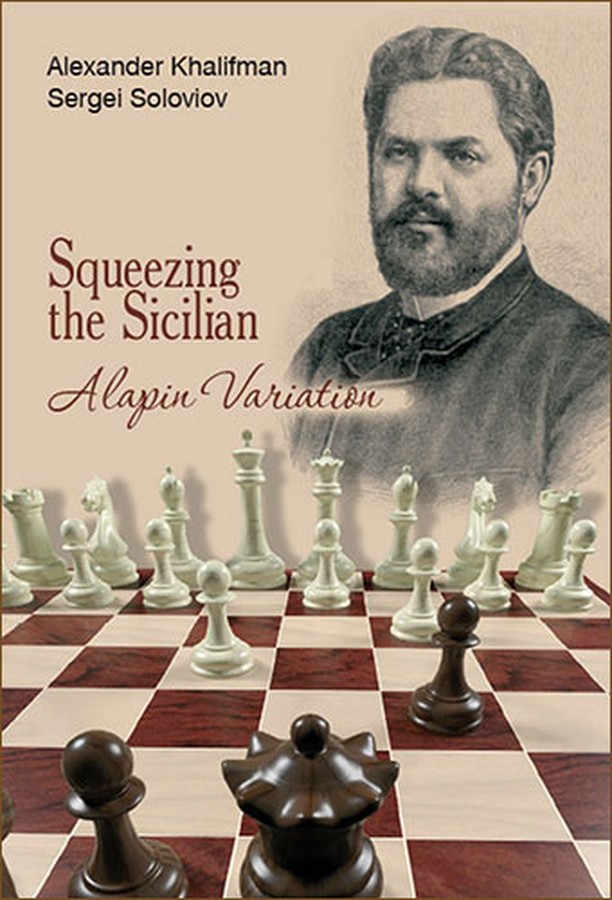| Nivå | C-D |
| Utgivelsesdato | September 2020 |
| Forfatter | |
| Pris | 340 NOK |
Squeezing the Sicilian: Alapin Variation
Overtar som mest aktuelle bok om å spille Alapin-siciliansk 1 e4 c5 2 c3. Her har hvit gode metoder mot alle svarts mer eller mindre vellykkede svar, og svart kan velge seg varianter til mulig utligning eller håp om motspill.
Nok et grundig arbeid av den anerkjente forfatter Khalifman.
Forlagets egen omtale
In the Alapin System White's strategic idea is extremely simple. He prepares to advance with d2-d4, to build a solid pawn centre and then dictate the play. He will have to pay for this with the fact that his queen's knight has been deprived of the best square for its development, but it may have other suitable squares (in many variations this will be not the d2-square but a3).
Secondly, it very often happens that after d4 cxd4 cxd4, White's queen's knight still gets access to its best square on c3. The modern evaluation of this system is that Black has comfortable enough lines in which he can obtain an acceptable game.
The authors try to prove that not all of these lines are equally good.
Fra forordet
Judging by the reviews of our previous book about the Four Knights Game, our concept of an “opening for the pragmatist” has turned out to be quite viable. Subsequently, having dealt in this way with 1...е7-е5, the authors wondered whether it would be possible to deal in the same way with other openings.
It is a well-known fact that the Sicilian Defence has been Black’s most popular response to 1.е4 for nearly seventy years now. Although lately the chess elite seems to have turned its attention to 1...е5, from the 2600+ level downwards the main response is still 1...c5 and as a rule it is this move that creates the most problems for White in prepar-ing for the game. So we wondered whether we could apply the same method here as in our previous book. The basic principles of our ap-proach are:
We should like to stay away from sharp modern variations in which the main lines and the evaluations are changing every month. Among other things, this means that the opponent might not know what to do against the lines we have chosen. One of the trends nowa-days is for players (even at the level of the solid amateur) to analyse the main lines in great depth and leave the sidelines for later. It is worth noting that this “later” never happens in some cases...
We want to avoid complex lines in which the value of every move is very high.
| Innbundet? | Nei |
| Type | Bok |
| Språk | Engelsk |
| Antall sider | 455 |

